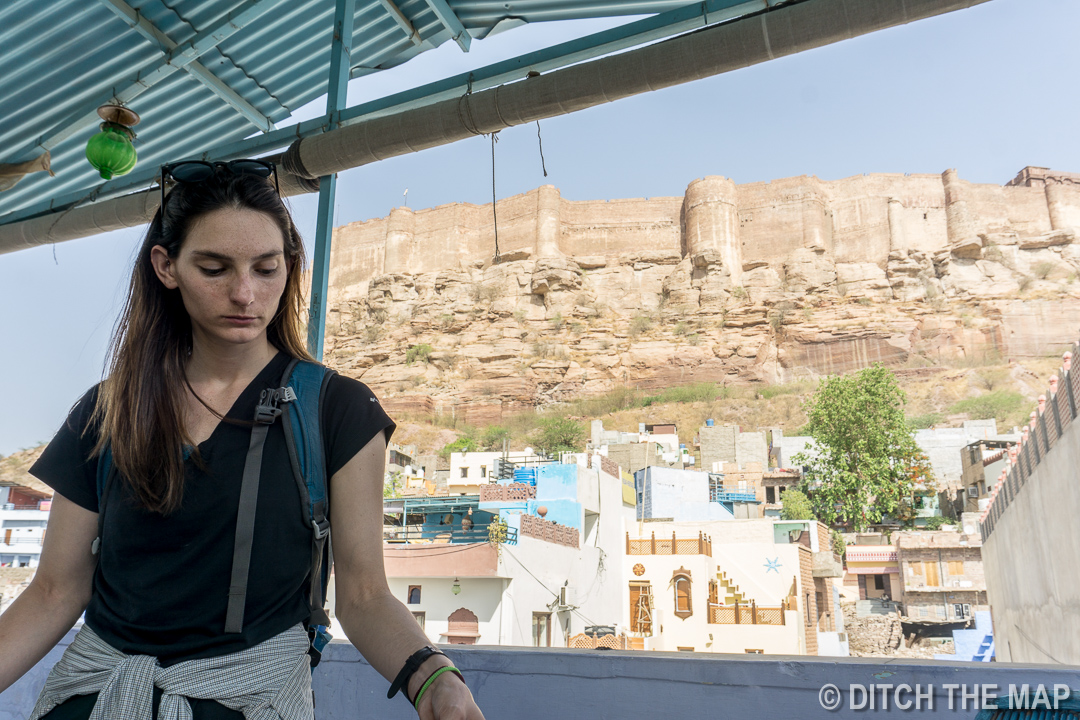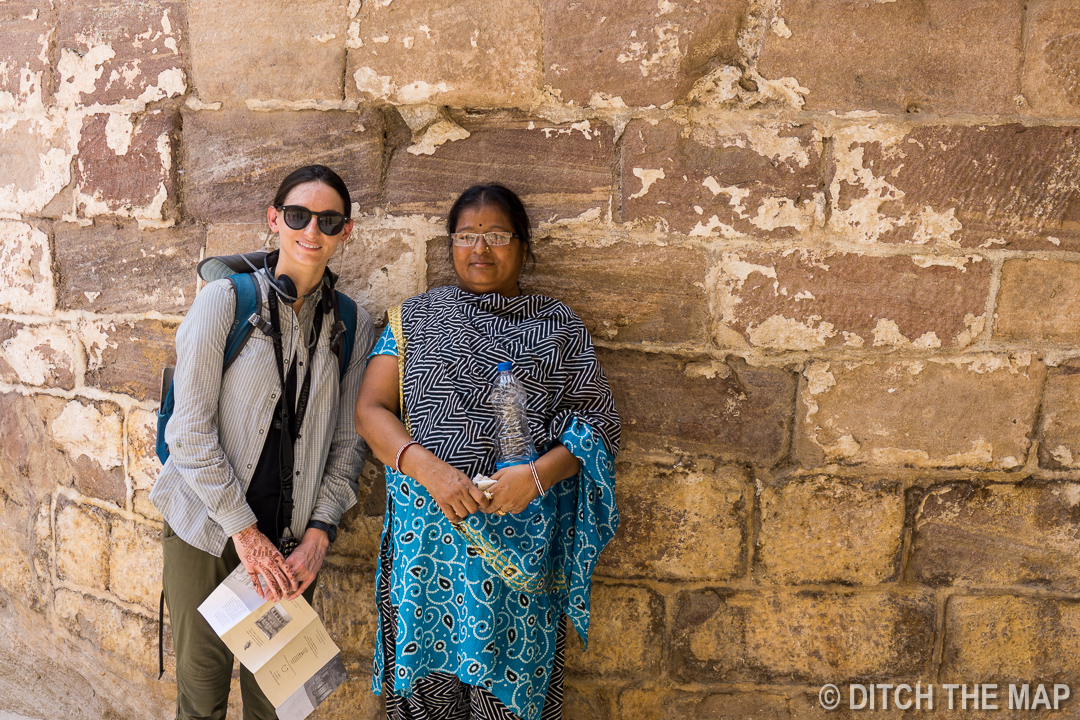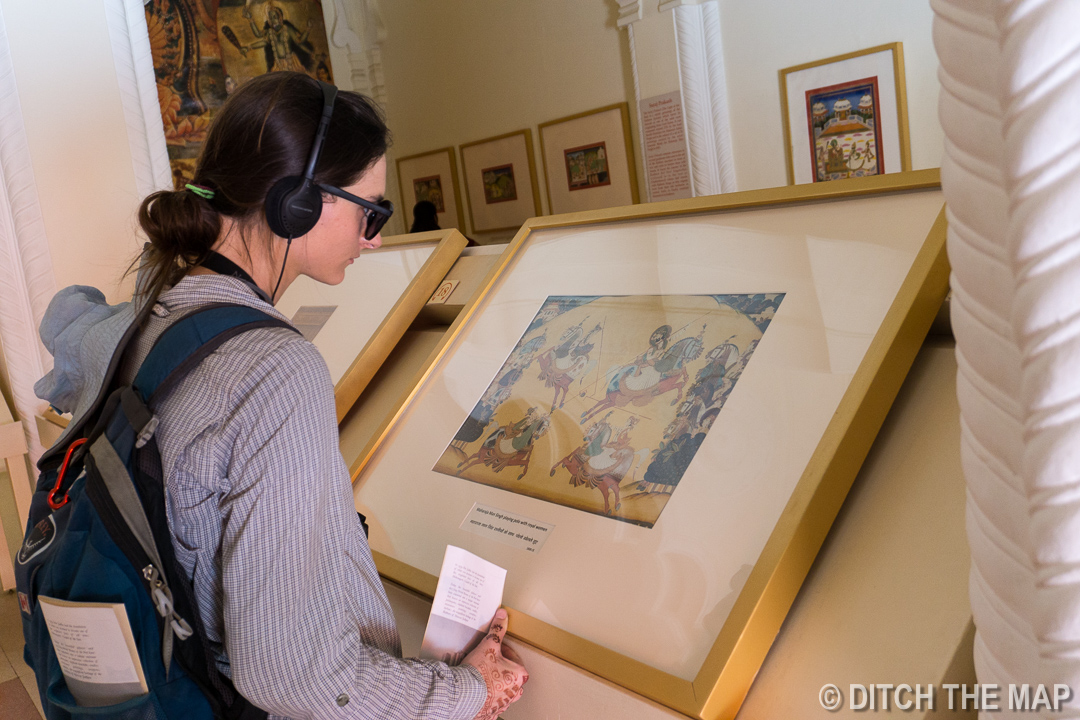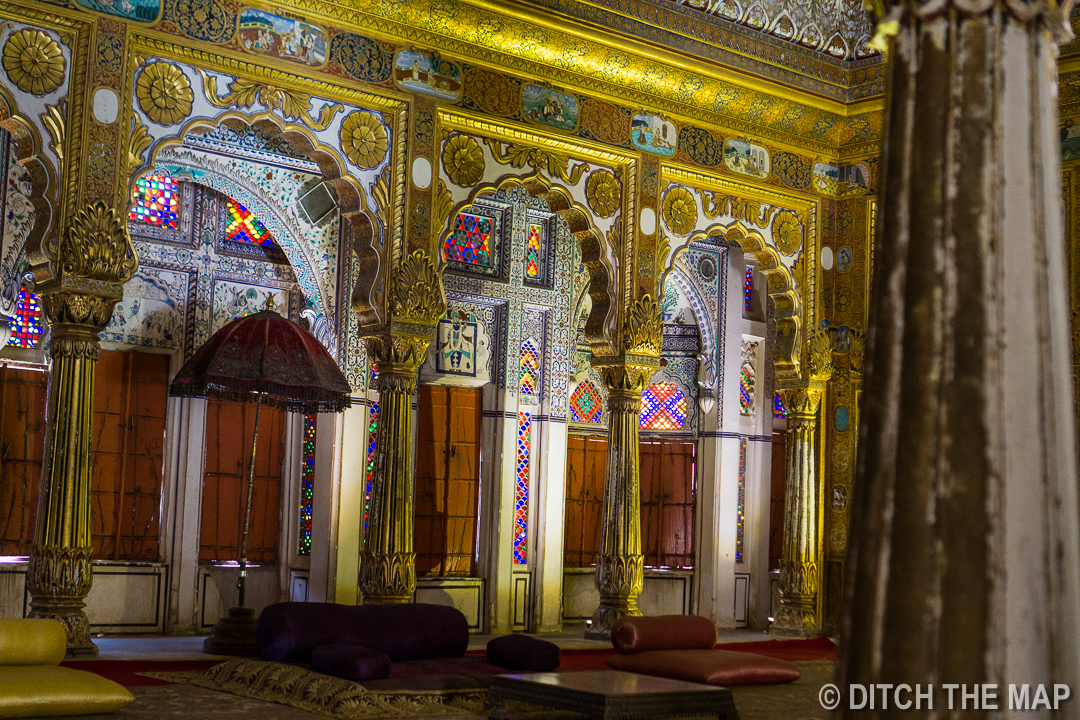3 Days in Jodhpur, India
/Getting to Jodhpur
After our arrival back from the desert we went to purchase bus tickets to leave that afternoon for Jodhpur. We found a tourist agency, asked when the next bus left, and bought tickets for the 11am bus.
Bus to Jodhpur, India
We carried our bags through the heat until we found the bus station. A bus was already there and we asked if it was the 11am. A man sitting outside said yes. Great, our bus was on time. We climbed onto the non-air conditioned bus and observed the strange layout. On one side of the aisle were two seats, and on the other side of the aisle were benches. There was a second level on the bus that had little 3' by 6' cubbies where you could only lay down.
We found two seats on the bus, put our bags away and got settled. Not for long however as a man working for the bus told us that this was the 10:30 bus and our tickets were for the 11am bus. We were a bit confused as the time was 10:50?? but he sternly repeated that our bus came next. (Basically what happened was this man lied to us because we had paid for the ticket at an outside agency and he wanted cash in his hand.) He made us get off the bus.
After inquiring more and learning that this was in fact the 11am bus we pushed back on to the bus. The same man told us he couldn't accept our ticket because he didn't issue it, expressing no shame for his earlier lie that we were on the incorrect bus. So now he was onto lie number two.
Trying some street food on our bus to Jodhpur, India
Scott pushed onto the bus anyways and refused to leave the seat that we had paid for. He told the guy to "take [his] ... hands off him and he better not lay another finger on him again". Scott told the guy "we are on this bus and I don't care what you have to say about it. If you oversold it then you will have to kick an Indian off of it because we are not budging". We literally had to fight for the seats that we had paid for. But our persistence and adamance finally paid off and after learning that we would not forfeit our seats, the man gave up. (No one else on the bus spoke english and probably thought, why are these crazy white people making such a fuss?)
Our Hotel in Jodhpur, India
Our Hotel in Jodhpur, India
Our patience is wearing thin from the constant lying. Lies are told to our face without so much as the bat of an eyelash. In our culture honestly is revered and the disconnect here has left us with a sense of distrust. It's actually kind of isolating because we feel like our interaction with locals has been limited because of the level distrust.
Also...It's a joke that they tried to kick us off the bus because for the next 4 hours people without tickets shoved onto the bus from every road side stop cramming into the aisles. We may have been the only people who paid in advance for a ticket, therefore rightfully deserving the seats we had! Needless to 5+ hours on a non-AC drive through the desert made for a very uncomfortable ride.
The City of Jodhpur
Jodhpur is known as the 'Blue City'. Some say the color is associated closely with the Brahmins, India's priestly caste, and the blue houses of the old city belong to families of that caste. Consequently, you might well hear the properties referred to as the 'Brahmin Houses'.
Getting my sandals repaired on the streets of Jodhpur, India
Getting my sandals repaired on the streets of Jodhpur, India
Street Food in Jodhpur, India
We walked around the New Town area, which is located around the Clock Tower and Sardar Market for a while shortly after checking into our hotel. We were looking for information on the 'Village Safari' that I took 7 years ago. Shortly after setting out I broke one of my thongs. It had broken earlier in the week and I used my needle and thread to reattach the thong part but now the side came off. A friendly shop keeper was nice enough to allow me use of some tape to quickly fix the shoe. Someone else then pointed me in the direction of a shoe repair guy. The guy worked on the side of the road. He had all his equipment laid out in front of him and he even gave me a temporary sandal to wear as he worked on my thong. I asked him to look at my other to repair the stretched out top. He made my sandals feel almost as good as new. I was shocked when I asked for the price. He said "20 rupees", which is only $0.30 USD. He spent a while on my shoes reattaching the thongs and resewing the straps. I gave him 32rp and told him to keep the rest as a tip but he was adamant in giving me the 12rp back. I had to really push for him to accept the tip.
Weather Forecast for Jodhpur, India (Wed May 18, 2016)
It's was quite striking to hear this man be so ethical and hand me back the extra money when so many of the indians on the streets try to scam tourists. I think I know why this is: The Indians that work in tourist-related fields do simply consider 'ripping someone off' as a business tactic. We westerners have a different view on what a 'set price' means and Indians charging more is just a cultural difference. In addition to the shoemaker I have also found that merchants (food, fruit, and store clerks) also are more fair when it comes to charing us for their goods. There have been times when a food stall has tried to rip us off on water and I made sure to let that one guy have it. However that was near a tourist attraction and many merchants are trustworthy people. I've read that Merchants are of a higher caste than many of the Indians that beg/work with tourists. I wonder if this impacts their sense of morality?
Mehrangarh Fort




The Blue City of Jodhpur, India
We walked the steep incline to the fort in the 120+ degree heat making no less than half a dozen stop along the way. The sandstones tiles leading the reflected the sun upwards such that the heat was inescapable. Just before reaching the main entrance Sylvie was accosted by three young Indian women. When I came back to get Sylvie I asked her what had happened and she said, "I don't know what that was about, it all happened so fast, one grabbed my hat and the other took my photo". These types of strange encounters never seem to get old. I felt a little bad rejecting a 7-year old's request for my picture when we jumped in front of me and blurted, "you, selfie?". However I think 4 glam shots per day is enough for us!
The fort was a little pricey but we did save 100rp each using our student IDs. The entrance of 400rp ($6.15) included an audio guide and a useless map. I was able to sneak my camera in without having to pay the 'camera tax'. The structure of the fort is really quite something considering it was built nearly 500 years ago. One thing Sylvie and I have begun to notice is that Indians make themselves at home no matter where they are. We saw countless families sitting in the halls of the fort museum just killing time on their phones. No other place is this phenomenon more apparent than at an Indian rail station. Families and friends alike claim their territory not only on the ground outside the station, inside the terminal, and at the platforms, but wherever else there is open space. It's relatively common to sit in the center of a staircase, oftentimes grabbing a seat while herds of people are behind you trying to descend.
During the walk back to our hotel we stopped at a well-known lassi shop near the Clock Tower and tried the famous makhaniya lassi for 30rp ($0.50). It was served just a tad colder than room temperature, a treat considering many times lassi is served hot. The lassi was thick, eaten with a spoon, and tasted like key lime pie.
Clock Tower in Jodhpur, India
Getting a Makhaniya Lassi in Jodhpur, India
Village Safari
The morning starting with an exciting adventure of recovering our laundry that had flown off the clothesline. Looking over our rooftop onto the other neighboring houses we saw half a dozen people sleeping on their roofs. We were able to locate the clothing and gestured to someone to toss the clothes down. Success!
While on a village safari we see a potter using a manual (self spun) pottery's wheel. (click to view)
Potter at Local Village Outside Jodhpur, India
Our village safari started shortly after at 7am. Sylvie and I were the only people on the safari—we had our own jeep with a private driver. For 1,200rp ($18.50 USD) I thought it was reasonable. We visited 3 separate towns and in each town we got to experience something new. During the open window jeep ride we stopped to see a large mating peacock and a few other mammals.
Participating in an Opium Ceremony Outside Jodhpur, India
Participating in an Bishnoi Village just outside Jodhpur, India (click to view)
In the first town we saw a potter using a massive self-spun wheel. The second stop was at a Bishnoi village where we took place in an opium ceremony. We asked where they sourced their opium and we were told they found it “through underground methods usually from Afghanistan and Pakistan”. The last stop was in a Salawas dhani that weaves Panja dhurries.
I remember the dhurries from my last trip to Jodhpur, when I also participated in a village safari. After returning from India I regretted not getting one. This time around we bought two. One of them was just finished 15 days ago and made by the guy (along with his brother) that showed us the weavings. The other dhurrie was made by a woman and her daughter recently as well. The typical dhurrie takes two people one month to weave. One of the dhurries we bought had a very intricate design and took the two ladies 3 months to complete I’ve read about these weavings and can confirm the accuracy of the guy’s facts. Unlike a rug, which is one-sided, a dhurrie is made in a way that has the same pattern on both sides. This makes the piece more durable than a carpet or rug. I truly believe the guy when he told us they would last 60 years or longer. The house we visited is part of a cooperative that is the only village in India to make these durees in this style. They are not sold in shops and are usually sold directly or at a government exhibition. When sold at exhibitions they sell for many times the price. The dhurries were made from camel wool, cotton, silk, jute, and various blends.
A Local Village Making Handwoven Textiles Outside Jodhpur, India
A handmade dhurrie made in Rajasthan at Salawas, known as a Panja dhurrie. (click to view)
After buying the two dhurries Sylvie and I were a little skeptical at the large price we paid but we had read from the Lonely Planet that such cooperatives sell high-quality hand-made items usually at fixed prices. Also, cooperatives tend to pay their employees well and offer some types of social programs, giving back to their community. The guy was asking 15,000rp ($225 USD) and 8,000rp ($120 USD) for the 3-month and 1-month dhurries, respectively. He went at low as 7,500rp ($112 USD) for one of them and said because we were his first customers of the day and that it was a slow season (VERY HOT!). We went back and forth and agreed on 19,000rp ($285 USD) for the pair. Quite expensive when considering that is more than half the average income for an Indian living in Rajasthan. A handmade item of this quality back in the states would no doubt cost a magnitude more. Even a cheap rug from IKEA will cost over $100 USD and those are made of plastic.
We returned from our village safari around 10am and had our driver drop us off at the bus station where we are catching our 4-hr air-conditioned bus to Ajmer. From Ajmer we will take a short bus ride to Pushkar.
Waiting at a Bus Station Until Our Ride to Ajmer (Pushkar), India
Original Publish Date May 17-19, 2016
Old Blog - Jodhpur 2009





